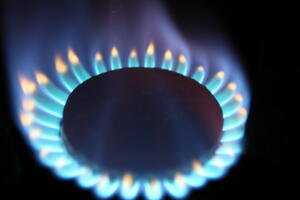Beware Carbon Monoxide, the Silent Killer

During January, Habitat Weekly will advise boards on how to deal with a quartet of natural-born killers. This week: carbon monoxide.
Carbon monoxide can kill. It's a nasty, insidious killer, too, sending you into slumberland before it takes you down.
Carbon monoxide, or CO, is produced through "incomplete combustion," which occurs when a flame doesn't have room to breathe. Odorless, colorless, and tasteless, CO exists in devices that burn fossil fuels, such as oil burners, furnaces, water heaters, fireplaces, and parked cars. If you develop headaches or dizziness, or become tired, and nauseous you may have CO poisoning. The best remedy is to open all windows, get out of the house, and call the fire department.
But the best way to deal with it is to stop it in its tracks.
There are many laws - both state and city - designed to do that. The New York City Carbon Monoxide Law requires every dwelling unit near a source of CO to be equipped with operational CO detectors within 15 feet of each bedroom. They do not necessarily have to be installed high up, since CO does not rise to the ceiling as smoke does. They should not be installed near bathrooms - sources of humidity - or gas-burning stoves or dryers.
What else must the board do? It needs to provide and install one or more detecting devices in each dwelling; post notices listing the requirements of the law; replace within 30 days any inoperable devices; provide information on carbon monoxide poisoning; and keep records relating to the installation and maintenance of the equipment (which you are prepared to make available to the department of Housing Preservation and Development (HPD), the Department of Buildings, the fire department, and the Department of Health and Mental Hygiene on request). All detectors must be approved by Underwriters Laboratory (marked with the letters "UL") and must be tested regularly (typically once a month). Batteries should be changed twice a year. The owner must also file a Certificate of Satisfactory Installation with HPD within 10 days.
In a co-op, the corporation owns all the apartments, so the board must provide and ensure that the CO alarm is properly installed and replaced (you should have the super check it out). In a condo, however, CO alarms in apartments are generally the responsibility of the individual unit-owners. The same laws apply to them when it comes to approved devices and replacement schedules. The law requires alarms even be installed in unoccupied units.
Costs typically range from $20 for a basic model to $60 for ones with digital readouts and controls. CO detectors can be purchased at hardware stores and home centers.
The owner of the building must pay for and install the carbon monoxide detector.
Civil penalties can get as high as $100 for each violation; failure to provide proper notices to occupants or certification of installation can carry civil penalties of up to $50.
For more information, check out: http://www1.nyc.gov/site/hpd/owners/Smoke-carbon-monoxide-detectors.page

